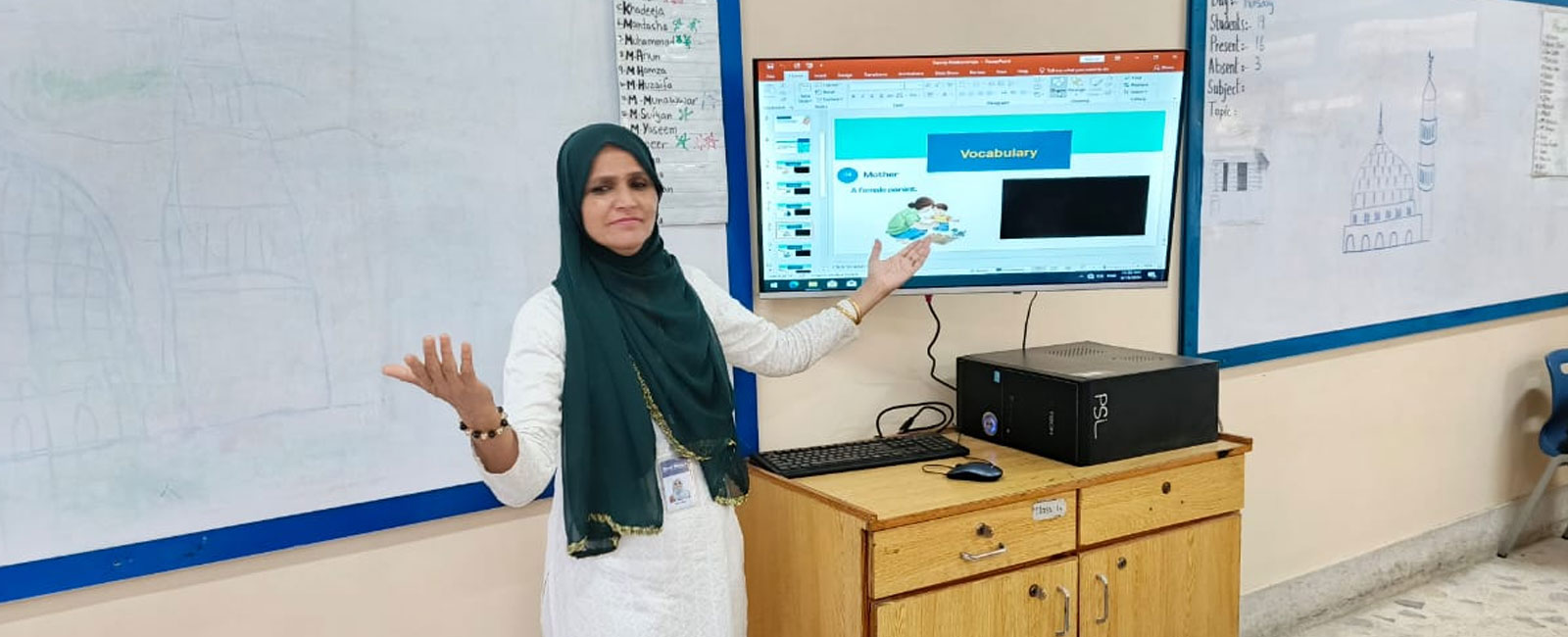Making 'signs' of Pakistan's struggling deaf community heard
International Day of Sign Languages 2024 reminds us to empower Pakistan's deaf community for greater societal inclusion and an end to discrimination

A spacious classroom with long wooden desks is decorated with colourful art made by deaf children. Riffat Niaz, their Urdu teacher, who shares the same disability, interacts with the students using sign language, teaching them the names of fruits in the national language in a friendly, thoughtful manner.
Niaz incorporates cheerful jokes into her teaching, making the lessons more engaging. She and her students form a deep connection through a language that has yet to be normalised in Pakistan. Both the teacher and her students laugh together as they watch a funny animation of fruits on a projector in their classroom. The visuals serve as a tool for the students to grasp their lessons along with sign language.
As Riffat, 53, concludes the class and the students leave after a memorable lesson, she shares her life story as a deaf woman, revealing the many challenges she faced before securing a job at Deaf Reach, an organisation supporting deaf people in Pakistan.
With the help of an interpreter, Riffat, whose entire family is deaf, signed about the support she received with the help of training from Deaf Reach.
“Earlier, I studied in a school where sign language was not easily understandable. The teachers would get angry. Then, I came here [Deaf Reach] to learn sign language and was asked to also bring my deaf children after which they, too, learned sign language easily,” Riffat, who grew up in a village, gestured, while being interpreted.
After learning the sign language, she later became a teacher herself. “In the beginning, I used to sew, but then I pursued a BA [Bachelor of Arts] and started my job here after receiving the training.”
Life for Riffat was not easy before she equipped herself by learning the language that eventually helped her communicate with others like her, as well as those familiar with it, secure a job, make a living for herself, and teach her children how to communicate using signs.
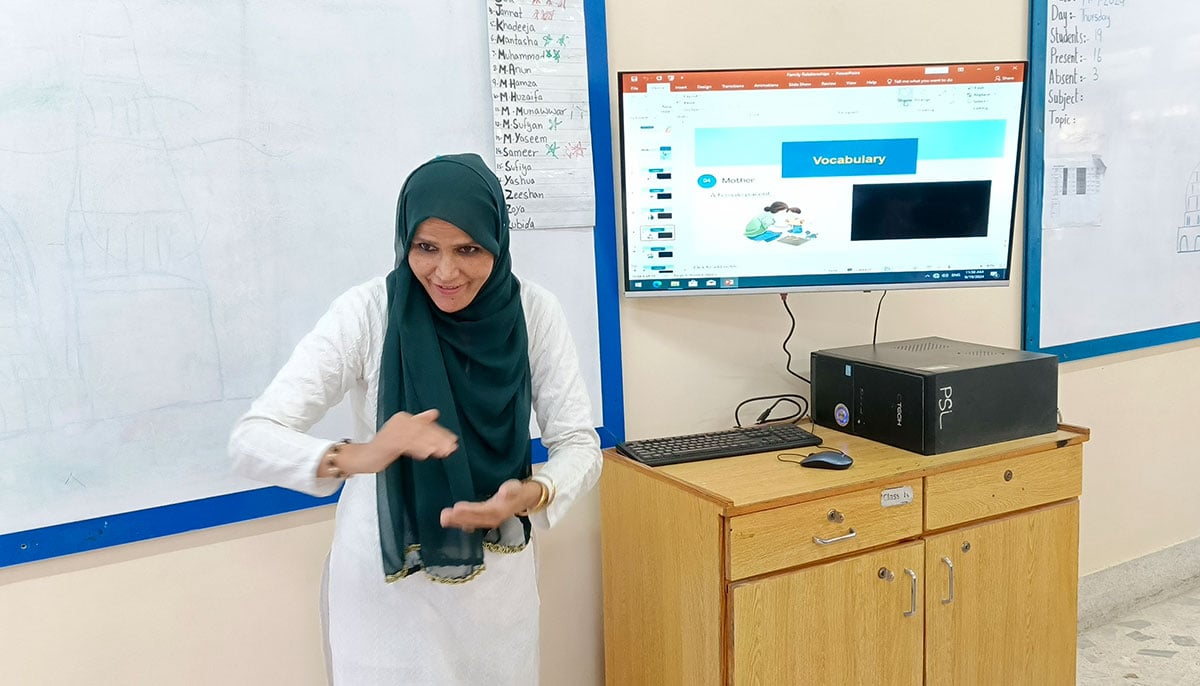
Riffat is one of many deaf individuals who either spend their lives in isolation — restricted by self-learnt gestures — or struggle in their daily lives even after learning the language, as knowledge of it remains limited in wider society.
According to the Pakistan Bureau of Statistics, there are over four million deaf people in the country. More than two million of them are based in Punjab, over one million in Sindh, above 600,000 in Khyber Pakhtunkhwa (KP), and more than 100,000 in Balochistan. A 2023 study — Pakistan Sign Language Recognition: Leveraging Deep Learning Models with a Limited Dataset — found that the Pakistani Sign Language (PSL) is used by over 250,000 deaf Pakistanis.
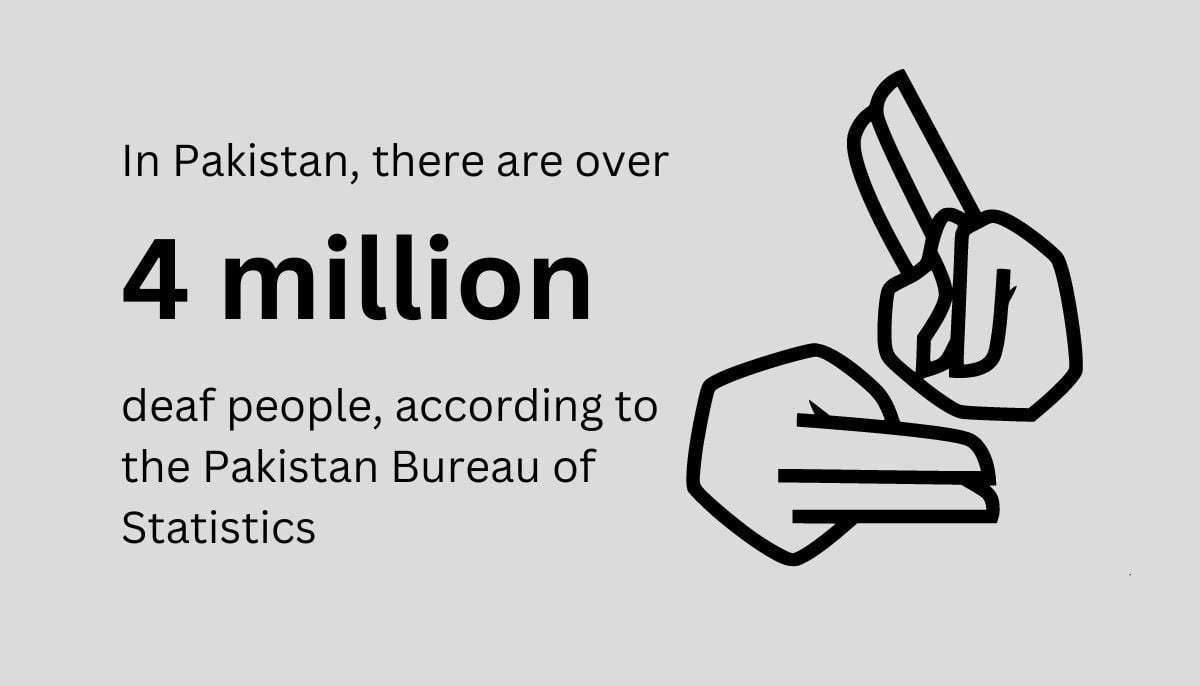
The United Nations observes the International Day of Sign Languages on September 23 to support and celebrate the linguistic identity and global diversity of deaf individuals. This international body recognises the importance of sign languages as vital to the full realisation of deaf people’s human rights. What is interesting about sign languages is the fact that there are many around the world. Different signs are allotted for various gestures, expressions, and information. Teaching sign language is a craft and is considered a necessity by many human rights organisations globally.
To understand the significance of knowing, learning, and using sign language in Pakistan, Geo.tv met with deaf individuals like Riffat, their non-disabled relatives, friends, and coworkers, as well as organisations serving the deaf community, to explore the role it plays in making communication easier and everyday life less difficult.
Socially overlooked challenges
Societal ostracisation of people with disabilities, including the deaf, in the country is evident not only in social settings but also on a systemic level. It is important to note that, according to the Pakistan Education Statistics 2020-2021 report, Pakistan has at least 26.2 million out-of-school children, including around two million more girls than boys. Among these already underprivileged children, the struggles and dilemmas of those who are deaf are further exacerbated. In addition to education, employment and economic participation also remain significant challenges for the disabled community.
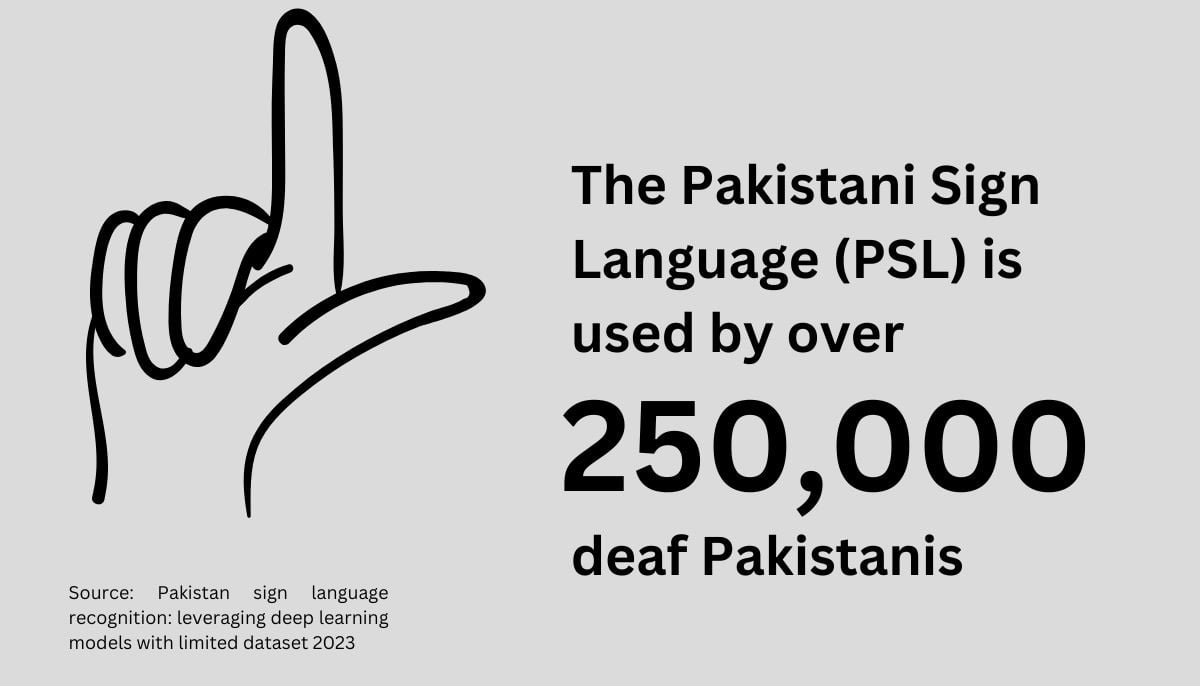
Highlighting this challenge, Sanober Siddiqui — a culinary arts manager at Deaf Reach — said that the criteria for employment are very difficult for deaf people. However, many such individuals are working in big companies with the help of their organisations, where they learnt sign language and other skills.
Similarly, Riffat’s path to becoming an Urdu teacher at the organisation followed significant financial struggles. With only her husband working, it wasn't easy for the family to make ends meet.
“The salary was low, so I decided to work as well. I started sewing. Paying our children’s school fees was one of the main problems,” she said, gesturing via sign language.
Riffat added that getting a job as a deaf woman was a tough task. Communication issues exist, but as of now, her family’s expenses are covered.
This dilemma of unemployment was further highlighted by Zahid, a 33-year-old deaf staffer who provides computer training at Deaf Reach.
“I submitted my CV everywhere but was rejected before joining the organisation [Deaf Reach]. My sister helped me get here,” he said, adding that he was first taught sign language before becoming a trainer.
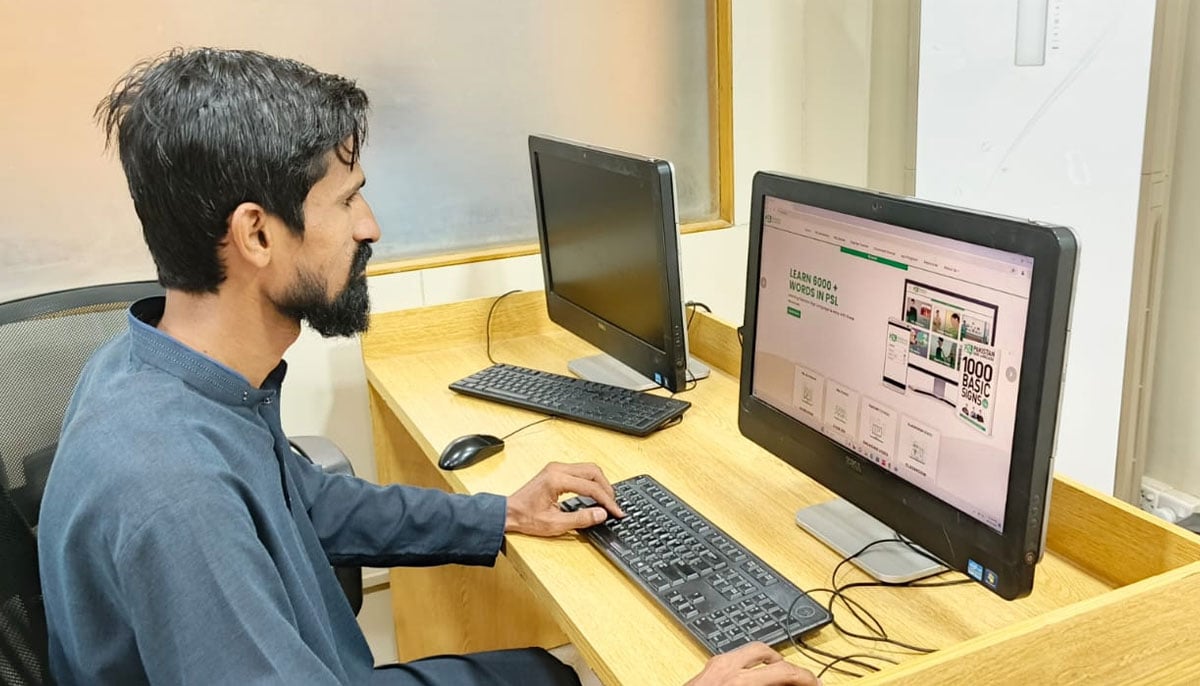
Discussing the communication challenges within his family, Zahid shared that his mother used sign language to communicate with him, but they still couldn’t fully understand each other. “The communication wasn’t smooth. There was frustration on both sides because of the conversation barrier,” he explained.
Zahid’s hearing sister, Sobia, spoke about how learning sign language had impacted their relationship. “I’ve been with him since childhood and taken care of all his responsibilities, including his schooling. My communication with him in sign language was always good, but it has improved even more. There are many nuances in sign language, so I went to learn it properly,” she said.
Similarly, Riffat’s hearing brother, Khalid, noted how learning sign language had significantly improved their relationship. He explained that his sister had become much more proficient in using signs.
“The communication gap has narrowed. Before, she would write to us to communicate. I’m her youngest brother, and I’ve known how to communicate with her through sign language since childhood,” he said.
However, Riffat’s other siblings and cousins initially struggled to communicate with her. “But now they understand,” he added.
Alternative communication mode
The deaf community in Pakistan continues to struggle with daily communication. They often lack access to education and employment, which contributes to rising poverty levels.
However, with the help of initiatives like Deaf Reach, the Pakistan Association of the Deaf (PA Deaf), and Connect Hear — Pakistan’s first sign language video interpretation provider — many deaf individuals are benefiting from these services. They are becoming familiar with new approaches, training and teaching methods, sign language learning, and technological aids, which improve their communication in various everyday settings.
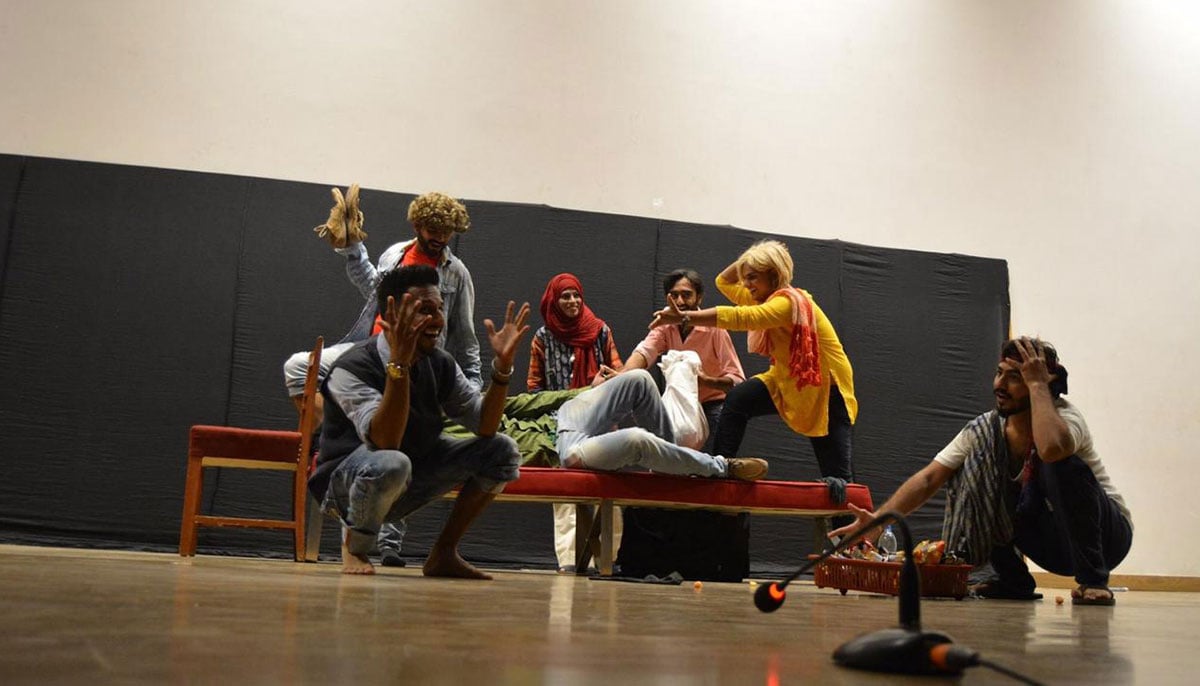
Both PA Deaf and Deaf Reach offer financial welfare programmes and training sessions to support the deaf community, while Connect Hear has introduced innovative services in addition to teaching sign language, such as a sign language interpretation app that helps deaf individuals communicate more easily with the assistance of a virtual interpreter.
Azima Dhanjee, the founder of Connect Hear, emphasised the importance of recognising sign language as an alternative communication method. Azima, a child of deaf adults (CODA), described sign language as a vital way to connect with the deaf community, highlighting its necessity everywhere.
“If we teach sign language to students and people from childhood, it will become normalised. As a result, schooling for deaf people and their visits to hospitals and banks will be easier. They won’t have to rely on anyone because people will understand their language,” she said.
Azima added that deaf individuals work hard to improve their communication and integrate well into wider society.
“They undergo speech therapy and try to learn to speak. So, if they are putting in this effort, it’s also important for us to learn sign language,” she added, stressing the need for more people to understand this mode of communication.
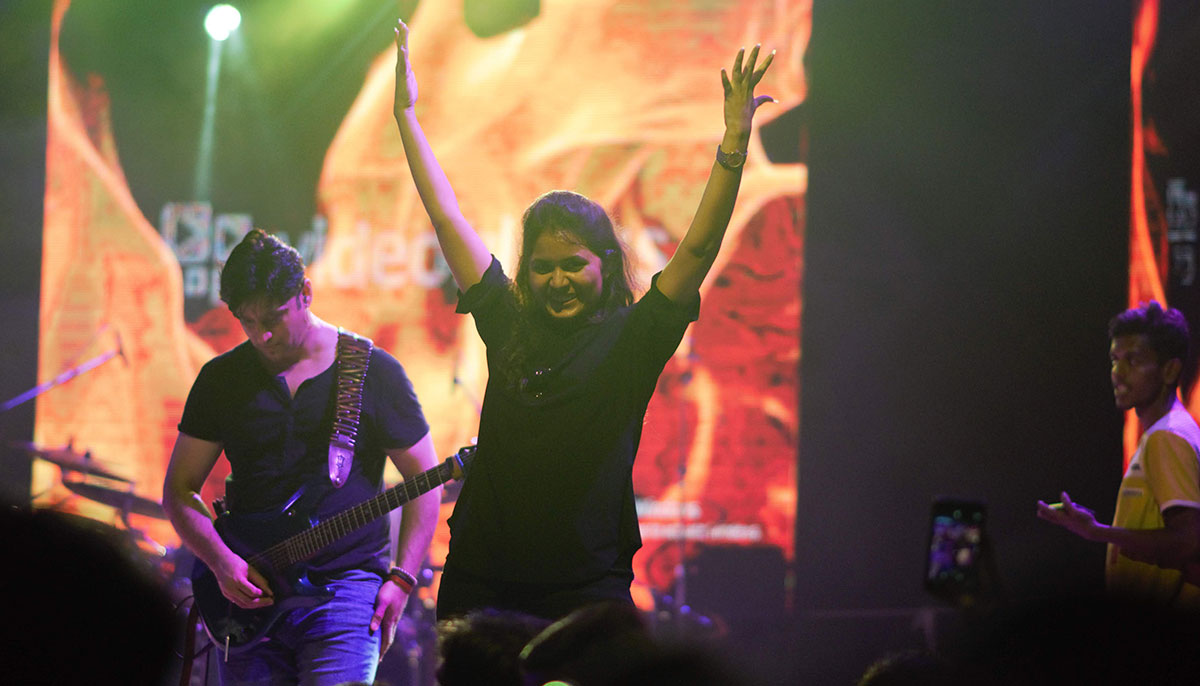
Azima has been interpreting for her parents since childhood. Having grown up witnessing the many challenges faced by deaf individuals, she decided to establish an organisation for them at the age of 19. She focused on the normalisation of sign language, pointing out that even hearing people subconsciously use it when speech isn’t possible due to certain circumstances.
“I communicate through sign language as a hearing person when [I can’t speak because] I have a sore throat. We also see parents using baby signs with their children before they can speak. So, it [sign language] should be looked at as an alternative mode of communication,” she insisted.
She also highlighted the benefits of learning sign language for autistic children, children with Down’s syndrome, and others with delayed speech development, noting that it could be a valuable resource for them. “That’s why every hearing person should know how to sign,” she said.
Connect Hear’s teaching methods rely heavily on videos and visuals. For hearing individuals, learning is easier because they can associate a word with a sound, but for the deaf, the concept of the word must be taught alongside its specific sign.
“For example, if we want to teach deaf children the sign for ‘apple,’ we have to show them a picture of an apple so they can understand. We say, ‘This is saib, this is apple,’ and then through lip-syncing, we teach its sign language as ‘aaa’ — ‘pple,’” Azima explained.
Differences in teaching methods
Drawing specific differences and parallels between teaching for hearing and deaf individuals, Khushboo Kanwal, a 30-year-old mathematics teacher at Deaf Reach said that the teaching method for hearing [people] is simple. She explained that teaching hearing students is relatively straightforward, as teachers can verbally instruct them with the resources available.
“When it comes to hearing students, teachers talk and teach them verbally,” she said.
“In contrast to this regular teaching method, we have to correct our signs in accordance with every topic that we will teach to the deaf children. This is the first challenge of teaching to deaf children,” Khushboo added.
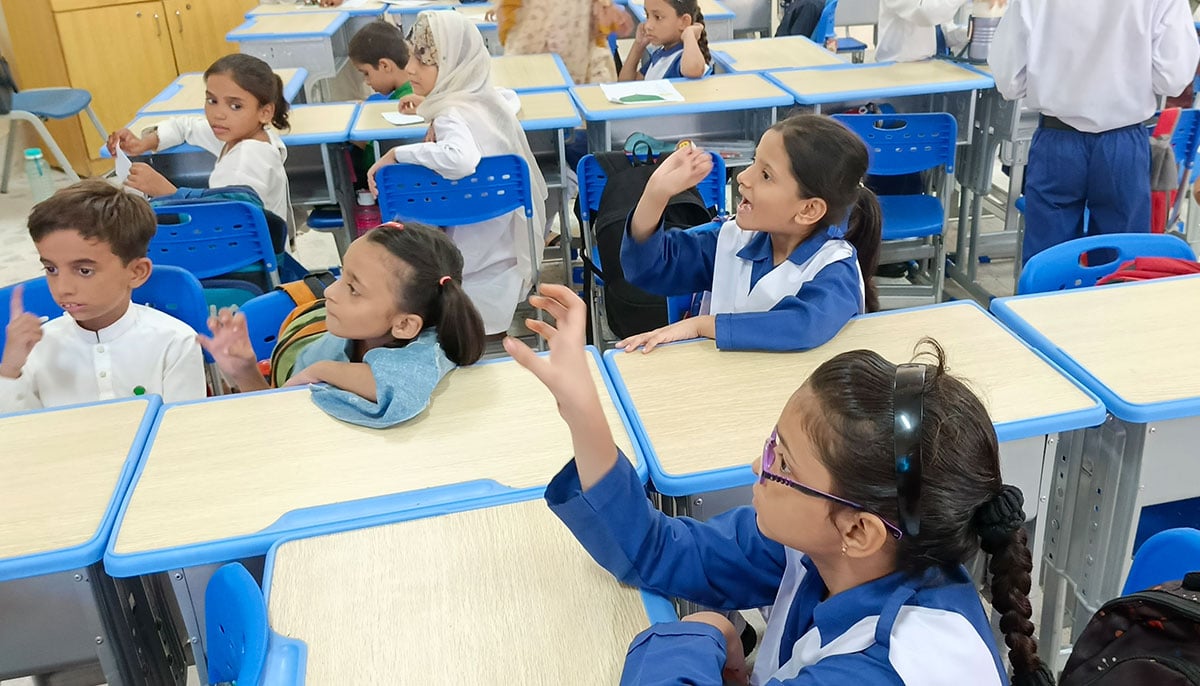
Khushboo, a sign language teacher, came to Karachi from Sukkur through a welfare programme. She learned sign language after meeting some deaf children in the city. As a hearing person, she developed a sense of attachment to the children and their method of communication. She underscored the need to be “very proficient” in topic-related signs so that deaf students can easily understand.
“If a teacher isn’t proficient in signs, the children get confused and express their lack of understanding. The signs vary by topic,” she said, explaining the complexities of her role.
Khushboo stressed that using clear signs helps clarify concepts in the minds of deaf children.
“As a result, our first priority is to be fully prepared with our signs before entering the classroom, so the deaf students can learn with ease,” she concluded.
Inclusivity and equity
Derogatory terms such as "mute" and "dumb" are notably no longer used to address deaf people, as they are recognised as a community with their own language—sign language. Advocates for the rights of deaf individuals argue that sign languages deserve fair treatment and need to be normalised, much like the many cultural languages that exist worldwide.
"Deaf people do not believe they are 'disabled.' They simply communicate in a different language: sign language. Deaf people are doctors, engineers, university presidents, members of [US] Congress, and hold many other professions," said Aaron Geary, the director of Deaf Reach, emphasising the need for societal inclusion and an end to discrimination.
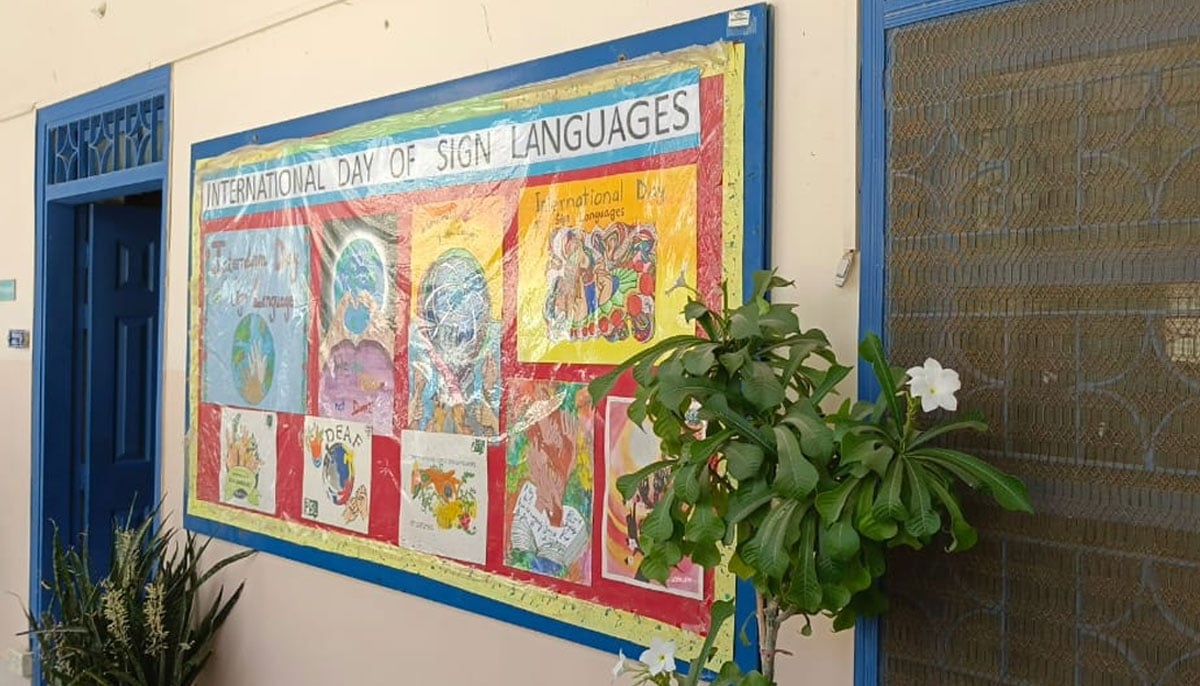
Sign language is just like any other language, only without words. To address the issues facing this significant demographic, its education and dissemination are essential and should be taught everywhere. The normalisation of sign language at a mainstream level can help establish a sense of equality between hearing and deaf individuals. While so much still needs to be done for Pakistan's deaf community at a systemic level, minor changes and new approaches can contribute to broader societal transformation.
The author is a staffer at Geo.tv. She posts on X at @kinzashakeel_.



